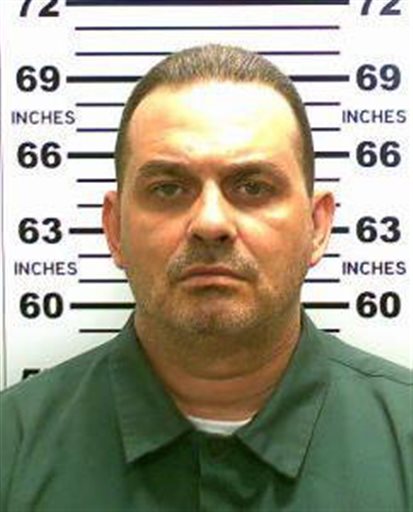
By JENNIFER PELTZ
Somewhere out there are an admitted killer who crawled through a Texas prison’s ventilation ducts, a murderer who apparently escaped from an Indiana institution in a garbage truck, and a Florida convict who got other inmates to put him in a crate at the prison furniture shop and had himself delivered to freedom by truck.
They’re among more than 130 state prison escapees nationwide who are listed as on the loose, The Associated Press found in a coast-to-coast survey.
Most have been gone for decades, meaning the chances of finding them have dwindled dramatically — that is, if they’re even alive.
Still, “you don’t forget about them,” said former Oklahoma corrections chief James Saffle, who worked for 11 years tracking escaped convicts. “Sometimes, some little action they take will trigger something.”
For the past two weeks, up to 800 federal, state and local law enforcement officers have been searching the woods and swamps around a maximum-security state prison in far northern New York for two convicted killers who used power tools to break out. The hunt is still in the early and intensive on-the-ground phase.
After the sightings wane and the dragnets come up empty, some states regularly revisit escape cases, keep an eye on vanished prisoners’ associates and check fingerprint databases, death certificates other sources for new leads.
But investigators largely have to hold out hope that they will get a tip out of the blue or that the convict will slip up, perhaps by contacting a relative or getting arrested for another crime.
Successful escapes from secure, fenced prisons are rare. At least 24 states say they have no such prisoners at large.
The U.S. Bureau of Justice Statistics reported about 2,000 state and federal inmates escaped or went off without leave in 2013. But the figure doesn’t indicate how many were caught and does not distinguish between breaking out of prison and walking away from work release or other unfenced settings.
The AP asked all states for a current total of escapees from secure, locked state prisons where they were held full time. Some states — including California, the most populous — couldn’t immediately provide an answer, and others responded only for recent decades, so the total is almost certainly higher than the 134 the AP counted.
Officials say most of the breakouts are decades old because prisons have become more secure. Some escapees have probably died. One 1955 absconder from Illinois would now be 112. One escape on Alabama’s list happened in 1929.
Some fugitives’ whereabouts are no mystery.
Joanne Chesimard was granted asylum in Cuba after her 1979 escape from the New Jersey prison where the former Black Panther was serving a life sentence in the killing of a state trooper. Jose Fernando Bustos-Diaz, the Texas inmate who squeezed through the ventilation system in 2010 to get out of a 35-year sentence for cutting his boss’ throat, is believed to be in Mexico.
But others could be anywhere, as New York officials acknowledged after Richard Matt and David Sweat cut their way out of Clinton Correctional Facility in Dannemora, close to the Canadian border, on June 6.
In the early going, law officers can search on the ground and send out a “bolo” — for “be on the lookout for” — through a federal clearinghouse that disseminates alerts electronically to virtually every U.S. criminal justice agency. It’s a crowded message center: By the end of 2014, there were 13 million active records, including wanted notices, lists of sex offenders and stolen property records.
Investigators also “have to crawl into the mind of the fugitive,” said Howard Safir, a former U.S. Marshals Service operations chief and New York City police commissioner.
Pursuers try figure out their target’s past addresses, associates, likes and dislikes, even survival skills, looking into such things as whether the convict had military experience or grew up hunting and fishing.
Captures often are quick. But after six months, a fugitive’s trail generally goes pretty cold, said Chuck Jordan, president of the National Association of Fugitive Recovery Agents. Pursuing decades-old cases is complicated by the difficulties of working with paper records and the passage of time.
Prison systems say they keep pushing.
Michigan said it reviews all escapees’ cases every six months and runs their fingerprints through databases every few years in the hope of a match. The Ohio State Highway Patrol checks criminal records, death certificates and social media annually for clues on cold cases, spokesman Lt. Craig Cvetan said.
“You don’t say, ‘Well, if we haven’t found the person by five years, we’re not going to do anything else with it,'” he said.
A convicted killer who escaped a California prison work camp in 1975 was arrested in 2011 after authorities heard his dying mother had sought to contact him. They checked her phone records. A 1977 fugitive from the military prison at Fort Leavenworth, Kansas, was caught last year after facial-recognition technology matched an old photo of him with the present-day Florida driver’s license he obtained under an alias. A North Carolina thief who spent four decades on the run simply called Kentucky authorities in April, saying he wanted “to get this behind me.”
“Nobody lives on an island,” Safir said. “It’s very hard not to leave some trail these days.”
___
Associated Press writers Jason Dearen in Gainesville, Fla.; Kantele Franko in Columbus, Ohio; Sean Murphy in Oklahoma City; Don Thompson in Sacramento, California; Corey Williams in Detroit; and others around the U.S. contributed to this report. Reach Jennifer Peltz



